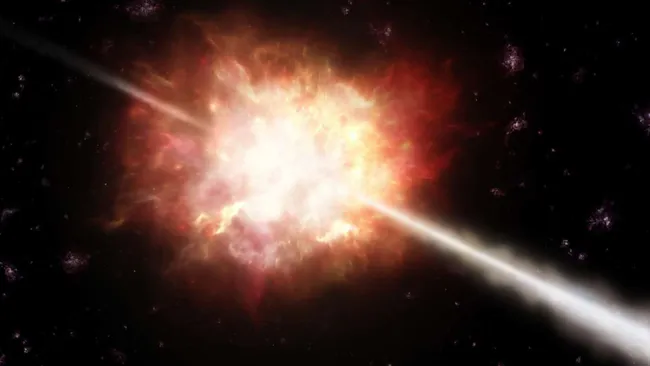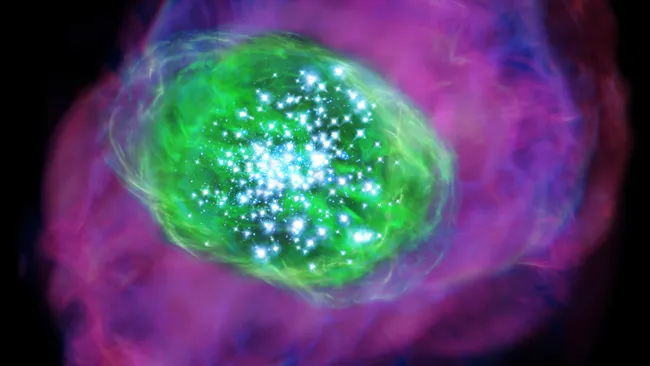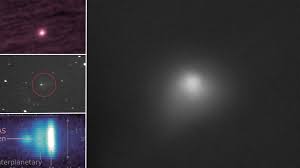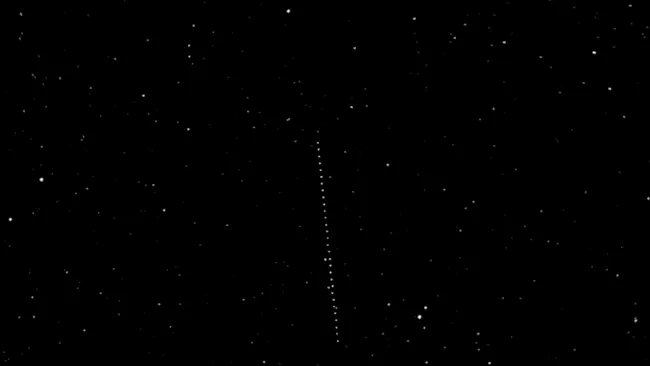Astronomers have reanalyzed what may be the most powerful cosmic explosion since the Big Bang—a gamma-ray burst (GRB) so intense that it’s been nicknamed “The Brightest Of All Time” (BOAT).
Officially designated GRB 221009A, the BOAT is the most energetic GRB ever observed, releasing as much power in seconds as our sun will emit in its entire 10-billion-year lifespan.
GRBs are notoriously difficult to study because their sources remain elusive. Although they’re detected as sudden bursts of energy lasting seconds to minutes, they’re followed by an afterglow that can persist for weeks or even months. These events are categorized into two main types:
- Long GRBs (lasting more than two seconds), believed to originate from supernovae of massive stars,
- Short GRBs (lasting under two seconds), likely resulting from neutron star collisions.
The BOAT is suspected to have originated from a supernova around 2.4 million light-years away, eventually leaving behind a stellar-mass black hole.
What makes the BOAT especially compelling is an excess in its gamma-ray flux, pointing to a more complex internal structure than previously understood. Theories now suggest that GRBs like this one create multi-layered jets—with a narrow, ultra-fast core surrounded by a slower sheath of material.
📡 Chasing the BOAT
First detected on October 9, 2022, by NASA’s Fermi and Swift satellites, the BOAT was followed for 20 days by the LST-1 telescope in La Palma, Spain, even under full moon conditions. This gave researchers time to gather invaluable data on the upper limits of gamma-ray emissions.
The results contradict previous “top hat” jet models and instead suggest a stratified structure, offering new clues about the mysterious engines driving GRBs. These findings demonstrate how advanced telescopes like the LST can pierce the veil of the high-energy universe.
Currently, three more LST instruments are under development in the same location, and new installations in Chile aim to provide even broader global coverage. These upgrades are expected to dramatically reduce the response time to GRBs and enrich our understanding of the universe’s most extreme phenomena.
The research was published on July 23 in The Astrophysical Journal Letters, marking a major leap forward in cosmic studies.







